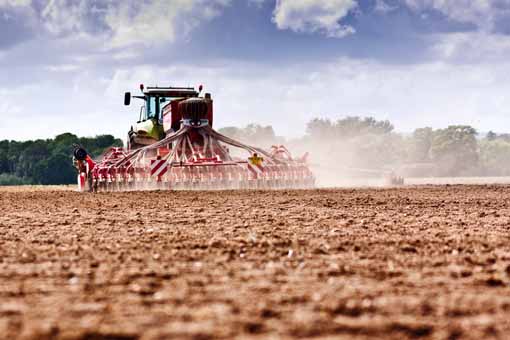Hemp could be the crop of the future

One day, hemp will be big. Really big. Its fibre makes an excellent replacement for fibreglass in car manufacture, building insulation and bonded reinforced plastics. It can even be used for brake pads.
Its woody core, or shiv, is well established as horse bedding, but it is finding a more lucrative use as the key ingredient in a novel, thermally-efficient building system.
On top of this, the crop needs few inputs, adding to its green credentials. Indeed, it has been hailed by some commentators as the crop that holds the key to a greener future.
However, the world is not ready yet for hemp on a large scale, says Mike Duckett, director of Hemp Technology, the UK’s largest hemp processor based in Halesworth, Suffolk.
“Hemp has a great future, but the real breakthrough will come when the price of oil rises to a level that makes the fibre widely attractive as a replacement to man-made alternatives. That could be in a couple of years or 10 years – no-one knows.
“The market is growing at about 15% a year – not as fast as people were predicting. But it takes time for industries to accept new materials,” says Mr Duckett. “And while everyone wants to be green, it also has to stack up economically. However, the market is now growing through market pull and that has to be better than trying to drive it from the supply side.”
He expects to process about 6,000t of straw this year from his 30 growers through the firm’s £4m processing facility, producing about 1,500t of fibre and 3,000t of shiv. At current market growth that tonnage and grower base could double over the next five years.
Another market gaining ground is hemp oil for human consumption, produced from dual-purpose (seed and fibre) varieties. Most is contracted to Devon-based Braham & Murray, which markets it as Good Oil, a low-saturated fat alternative to olive oil. Hemp seed is also included in a range of other goods such as specialist high-protein products.
Dual-purpose varieties account for about half the UK’s hemp area. Although margins are higher (see table) the crop has to be left a few weeks longer than fibre-only crops for seed to ripen – typically until mid-September. Straw then has to lie out for a further couple of weeks to start the retting process – the separation of fibre and shiv – and may not be baled until October.
For Essex grower Dan Squier it’s a risk worth taking. He farms with his brother and their sons at Doggetts, near Rochford, where, for the past five years, hemp has taken a quarter of the farm’s 600ha, slotting alongside first wheat and oilseed rape.
“We grow hemp for fibre on the headlands – this is cut in mid August and baled at about 15% two to three weeks later. This leaves a clear turning area when combining the dual-purpose varieties so we don’t trample straw under the wheels.”
As well as decent margins, key reasons for growing the crop are to control resistant blackgrass and improve soil structure. “Hemp isn’t sown until late April to May/June, so we get a chance to hit the weed with glyphosate in the autumn and again before drilling.
“Hemp is also very competitive – it needs no herbicide as it smothers weeds and remaining blackgrass. We haven’t used much Atlantis (iodosulfuron + mesosulfuron) for two years.”
Good establishment is absolutely vital, he emphasises. “Seed should be sown into a warm (10C) fine seed-bed when the risk of any frost is over, but always into moisture. The crop never does as well drilled into dry soil, even if it rains soon after. This year it was not drilled until early June and it was the one of the best crops we have grown.”
Seed rate is adjusted to achieve about 150 stems/sq m to keep them thin, which produces good quality fibre. Seed-bed recommendations are 112/60/120kg/ha of N, P and K on most soils.
Pigeons must be kept off until two true leaves, then the gate is shut until harvest. Dual-purpose crops are combined once seed reaches 16-18% moisture in mid September when the crop will be 3-3.5m high. “Our MF AutoLevel combine can cut high enough to take the heads and leave up to 2m of standing straw. We have found a few adaptations to smooth crop flow make all the difference.”
The standing straw is then treated like the fibre crop – a multi-bladed mower cuts the straw stubble into 60cm lengths to help speed retting and minimise the period before baling takes place. An adapted forage harvester can also be contracted in to do the job. The crop is then square-baled and stored under cover and delivered on a just-in-time basis.
Following this year’s late harvest and with blackgrass now more manageable, Mr Squier is replacing some of his hemp area with linseed. “It renmains an important part of the rotation, and if we need to grow more hemp again, we will.”
Hemp gross margins (£/ha) | ||
|---|---|---|
| Fibre crop | Dual crop |
Straw sales | 1219* | 975** |
Seed sales |
| 620** |
Seed | 137 | 137 |
Fertiliser | 240 | 240 |
Agchem | 14 | 13 |
Combining | 0 | 75 |
Cutting/raking/baling | 162 | 146 |
Drying | 0 | 5 |
Total costs | 553 | 661 |
Gross margin | 666 | 934 |
*7.5t/ha @ £162.5/t **6t/ha @ £162.50/t ***1.2t/ha @ £516.50/t |
|
|
